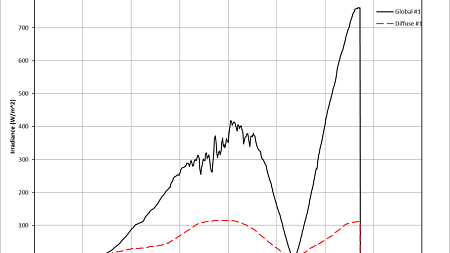The UO campus moved into almost total darkness at 10:19 a.m. Monday.

The UO’s Solar Radiation Monitoring Laboratory plotted the changes in solar radiation during the eclipse at numerous locations, including at Madras, Oregon, which was in the path of totality.
“The Madras plots show the intensity of total solar radiation on a horizontal surface,” said Frank Vignola, who heads the UO lab. “This is global data. The plot also shows diffuse irradiance that comes from the rest of the sky, but not directly from the sun. It is a fraction of the global irradiance.”
With a total eclipse, he added, the direct irradiance decreases to zero as the moon moves in front of the sun. “When the moon starts to move away from in front of the sun, sunlight increases steadily, in proportion to the amount not shaded,” he said.
In short, it got semi-dark Monday morning, and all eyes on campus were looking skyward.
(Photos by Dusty Whitaker)


